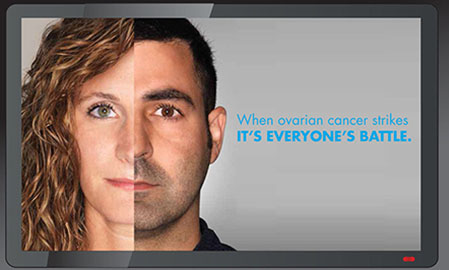Most holding company higher-ups are cautious about making sure each of their properties are given full shrift—this one excels in digital, that one in science, etc. That said, it’s possible to infer a touch of favorite-child status from the decision by Amar Urhekar, newly anointed McCann Health president of the Americas, to sit in on MM&M’s state-of-the-agency-union chat with McCann Torre Lazur.
This isn’t to say his presence was motivated by an ulterior motive, nor that he has a higher estimation of McCann TL’s performance or output than he does of McCann Health’s other properties. Indeed, he goes out of his way to individually praise each entity and talk about the ongoing (and, by all accounts, successful) process of bolstering the unified McCann Health brand. It’s just that there’s some side benefit to discussing that process in concert with the agency that’s coming off a year for the ages.
“It was the best year we’ve ever had,” crows Bill McEllen, president of McCann TL and McCann Torre Lazur Group. According to McEllen, McCann TL grew its revenue by more than 30% over 2012. It did so by furthering its rep as “the launch agency”: Of all the brands getting FDA approval in 2013, McCann TL has secured AOR status for 20%. “We’re working on at least seven brands that will come to fruition,” McEllen adds.
2013 pickups include Teva’s MS drug Copaxone and its antipsychotic Adasuve, new oncology and respiratory work from GlaxoSmithKline and a new HIV treatment from Gilead. The firm also pushed deeper into an area that hasn’t traditionally been an McCann TL stronghold: orphan brands, via the addition of Novartis’s bimagrumab (for the treatment of muscle-wasting condition sIBM) and Actelion’s pulmonary arterial hypertension drug Opsumit.
McEllen attributes some of the good fortune to a structural tweak. On both the account and creative sides, McCann TL added an additional leader. “We went from two directors to three,” he says. “The idea was to make sure senior management stays very close to clients.” The three managing directors are Beth Beck, Hilary Gentile and Mark Willmann; the three creative directors, reporting to executive creative director Marcia Goddard, are Deb Feath, Katharine Imbro and Modesto Rodriguez.
The structural shift also had the effect of empowering longtime McCann TL execs clamoring for more responsibility. “It’s not like we didn’t have a great farm system. Everyone was [promoted] from within,” McEllen continues. “You give people the opportunity to grow their careers, and the agency grows as a natural output of that.” Overall, head count has surged to 200, up 35 or so from last year at this time.
McEllen also points to the opportunities all McCann Health agencies enjoy as the mothership brand continues to flex its size-and-reach muscles. “Of the brands we’re launching right now, a good percentage are bringing in another firm—like McCann Managed Markets as a solution from the [payer] perspective,” he says. Urhekar, needless to say, isn’t exactly upset to hear this.
“Right now, we’ve got buckets of excellence in each of the agencies, and each has its own core DNA and expertise. We want to make sure we don’t lose that —with McCann TL, they’ve always been ‘the launch agency’ and we’re not going to deviate from that,” he says. “So how do other parts of McCann Health learn from this? And what can McCann TL learn from the others about other things, like high science? That’s the next challenge.”
From the July 01, 2014 Issue of MM+M - Medical Marketing and Media








